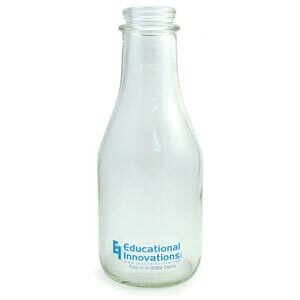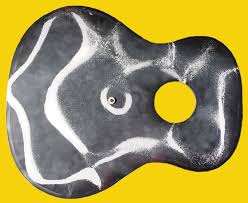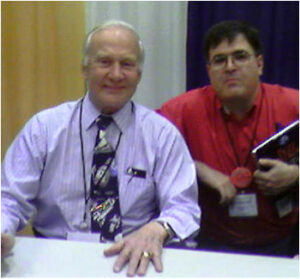June 1, 2010
 by: Martin Sagendorf
by: Martin Sagendorf
We recognize heat & cold, dry & damp, light & dark, and sound & silence. However… I find it absolutely fascinating to consider that we also live within something that we can’t see, hear, touch, or taste.
We all Know:
Our planet has a giant magnet near its core and that its field extends over the whole of the Earth’s surface. But, do we ever really think about this field that passes through soil, rocks, buildings… and us? Granted, relatively speaking this ‘field’ isn’t particularly strong. In fact, it’s a rather weak field when compared to those of a horseshoe magnet or, particularly, a modern Rare Earth magnet.
A Great Demo to show Earth’s Magnetic Field:
Read the rest of this entry »
 Leave a Comment » |
Leave a Comment » |  Earth Science, Elementary level, experiments, High School level, magnetism, Middle School level, Physics | Tagged: compass, Earth's magnetic field, magnetism, neodymium magnet, simple classroom activity |
Earth Science, Elementary level, experiments, High School level, magnetism, Middle School level, Physics | Tagged: compass, Earth's magnetic field, magnetism, neodymium magnet, simple classroom activity |  Permalink
Permalink
 Posted by Tami O'Connor
Posted by Tami O'Connor
May 27, 2010
 by: Tami O’Connor
by: Tami O’Connor
One of my all time favorite air pressure activities is an oldie and a goodie! It involves getting an egg into a classic, hard-to-find milk bottle, like the ones  delivered to grandma’s door. Unfortunately, some students (and some teachers) still think an egg can actually be sucked into a bottle. As you probably know because the air pressure is greater outside of the bottle than inside, the better explanation is that the egg is literally pushed into the milk bottle.
delivered to grandma’s door. Unfortunately, some students (and some teachers) still think an egg can actually be sucked into a bottle. As you probably know because the air pressure is greater outside of the bottle than inside, the better explanation is that the egg is literally pushed into the milk bottle.
Here is the explanation… The milk bottle and egg demo begins by placing two or three burning matches or a burning strip of paper into the empty bottle. Then a shelled, moistened hard-boiled egg is placed on the mouth of the bottle. The egg is clearly larger than the opening in the bottle. The air inside the bottle begins to heat up and subsequently expands. It is easy to notice the egg dancing around a bit as the air inside the bottle escapes around it.
Read the rest of this entry »
 3 Comments |
3 Comments |  Chemistry, Elementary level, experiments, High School level, Middle School level, Physics | Tagged: air pressure, discrepant event, egg in the bottle trick, milk bottle, PBL, phenomenon based learning, science demonstration |
Chemistry, Elementary level, experiments, High School level, Middle School level, Physics | Tagged: air pressure, discrepant event, egg in the bottle trick, milk bottle, PBL, phenomenon based learning, science demonstration |  Permalink
Permalink
 Posted by Tami O'Connor
Posted by Tami O'Connor
May 21, 2010
 by: Martin Sagendorf
by: Martin Sagendorf
An Odd Name: They’re named for the German physicist Ernest Chladni who popularized them in the mid-1700s. His name is pronounced: kläd’nêz.
Chladni Plates are: Thin plates (sprinkled with fine particles) vibrated perpendicular to their plane.
How? – Then and Now: Long ago Chladni used a cello bow to excite the edge of a thin metal or wooden plate. Today, we can use an oscillator, amplifier, and an electro-mechanical oscillator. We have a great advantage, we can easily vary the frequency of excitation thereby providing a whole vista of experimentation.
A 17 in. x 14 in. Chladni Plate in guitar shape at 200 Hz
 Read the rest of this entry »
Read the rest of this entry »
 7 Comments |
7 Comments |  College level, experiments, High School level, Middle School level, Physics | Tagged: construct your own physics demonstrations, energy, Ernest Chladni, frequency, oscillator, resonance, sound, standing waves, vibration |
College level, experiments, High School level, Middle School level, Physics | Tagged: construct your own physics demonstrations, energy, Ernest Chladni, frequency, oscillator, resonance, sound, standing waves, vibration |  Permalink
Permalink
 Posted by Tami O'Connor
Posted by Tami O'Connor
May 14, 2010
 by Ted Beyer
by Ted Beyer
Ever since I was a kid, I have been fascinated with space. I would look up at the stars, and I just knew that other people were up there somewhere, looking back at our little point of light, and thinking the same kind of thoughts. On the day I turned seven, Neil and Buzz landed on the moon and I was sure that—somehow—when I grew up, I would get there, too.
Incidentally, that’s me in the red on the right in the picture below. And on the left? Well, that’s Buzz Aldrin!

Read the rest of this entry »
 5 Comments |
5 Comments |  astronomy, Earth Science, Elementary level, High School level, life science, Middle School level | Tagged: apollo 11, astronomy, Buzz Aldrin, Campo del Cielo, chondrule, Ghubra meteorite, meteorites, parent friendly, PBL, restoring meteorites, Seymchan Pallasite, space, Tucson Gem and Mineral Show |
astronomy, Earth Science, Elementary level, High School level, life science, Middle School level | Tagged: apollo 11, astronomy, Buzz Aldrin, Campo del Cielo, chondrule, Ghubra meteorite, meteorites, parent friendly, PBL, restoring meteorites, Seymchan Pallasite, space, Tucson Gem and Mineral Show |  Permalink
Permalink
 Posted by Tami O'Connor
Posted by Tami O'Connor
April 19, 2010
 by: Bennett M. Harris
by: Bennett M. Harris
It never fails. I get the same reaction, whether I present to seasoned physicists, grade level science teachers or even from the most discerning audience I’ve had; a group of fifty – fourth grade students, jaws gape and sounds of oohs, aahs and wows issue forth.
I’ve been in rooms surrounded by hundreds of artificial light sources, from the simplest incandescent bulbs to the most advanced OLED displays, and even so, when a person closes that knife switch and current begins to flow and a simple piece of pencil lead held suspended inside a partially evacuated chamber starts to glow brighter, brighter, and finally white light illuminates the chamber, something happens in the person’s brain. At once they are connected with the wonders that Sir Humphry Davy, Swan, and Edison felt when they experimented with the world’s first electrical light sources. Questions start to form; How does that work? How could we make it last longer? What would happen if we changed the carbon for some other material? All at once, the passive viewer is thinking scientifically, asking questions, and yearning to do more.
Read the rest of this entry »
 2 Comments |
2 Comments |  College level, energy, experiments, High School level, Middle School level, Physics | Tagged: awesome demonstration, build your own light bulb, electricity, experiments, incandescence, phenomenon based learning, reinventing Edison, science kit, Sir Humphry Davy, STEM, Thomas Edison, Tungsten filament |
College level, energy, experiments, High School level, Middle School level, Physics | Tagged: awesome demonstration, build your own light bulb, electricity, experiments, incandescence, phenomenon based learning, reinventing Edison, science kit, Sir Humphry Davy, STEM, Thomas Edison, Tungsten filament |  Permalink
Permalink
 Posted by Tami O'Connor
Posted by Tami O'Connor
 by: Martin Sagendorf
by: Martin Sagendorf


 Posted by Tami O'Connor
Posted by Tami O'Connor  by: Tami O’Connor
by: Tami O’Connor

 by Ted Beyer
by Ted Beyer
 by: Bennett M. Harris
by: Bennett M. Harris